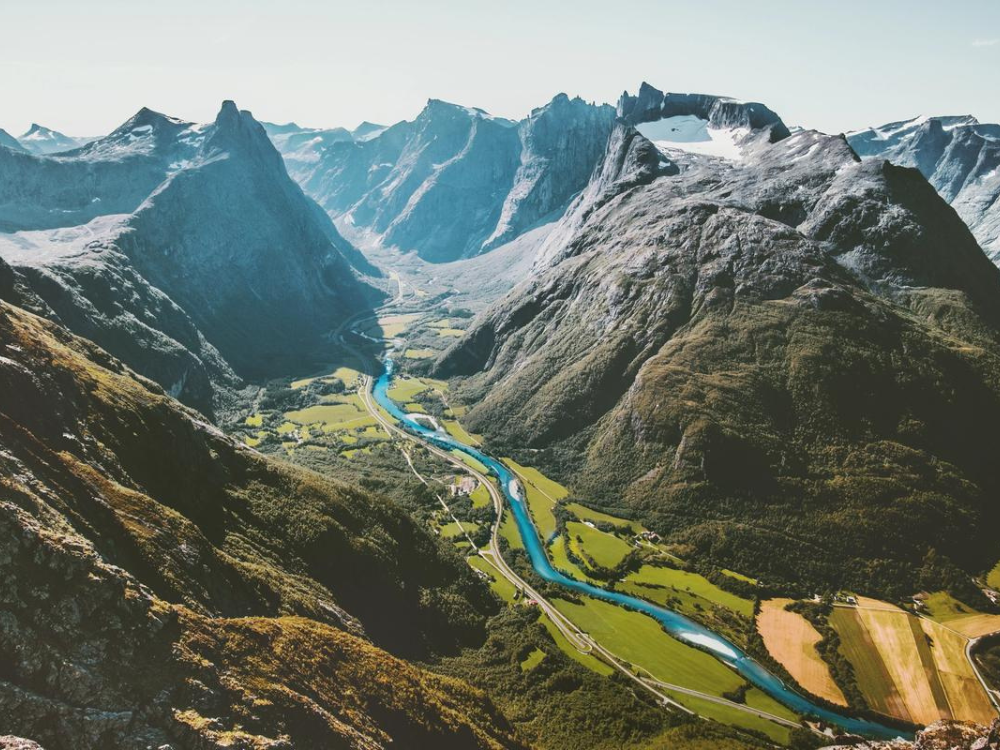In recent years, Norway has emerged as one of the most coveted destinations for the international audiovisual industry, thanks to the decisive efforts of the Norwegian Film Commission.
Headquartered in Bergen, this institution acts as a bridge between foreign producers and the Norwegian film ecosystem, offering comprehensive and personalised support to those choosing to shoot in a country that combines breathtaking nature, highly skilled professionals, and very attractive financial incentives.
Its work goes far beyond showcasing landscapes: it advises, connects, solves and facilitates, becoming a key resource for any production looking to shoot in Norwegian territory.
From the Rauma and Åndalsnes mountains seen in Succession, to the polar environment of Svalbard featured in Polar Bear, Superman or Mission: Impossible – The Final Reckoning, and iconic spots like the Atlantic Road or Oslo, shown in James Bond: No Time to Die, the Scandinavian country has become a true visual showcase.
But landscape alone wouldn’t be enough without a well-designed incentive policy and a professional sector capable of handling large-scale projects.
A smart and competitive support model
One of the main elements attracting international producers is the economic incentive programme managed by the Norwegian Film Commission. Norway offers a 25% cash rebate on all certified local spend, making it one of the most competitive options within Europe.
This rebate is granted to the top-ranking projects in each application round, with criteria that go beyond budget: they include shooting days, local economic impact, and hiring of Norwegian companies and professionals.
In 2025, this system helped finance feature films like If Love Should Die by Mia Hansen-Løve and Mile Zero directed by André Øvredal, as well as the drama series Mord i Sogn, created by Kristoffer Metcalfe.
It has also supported technically ambitious works such as Sinners, in which Storm Studios —one of Norway’s leading visual effects companies— was the main partner. The same studio also received funding for its work on the second season of Percy Jackson and the Olympians, as well as Star Trek: Strange New Worlds and Starfleet Academy.
Unique landscapes at the service of visual storytelling
Beyond financial incentives, what truly sets Norway apart as a filming destination is its scenic diversity. Few countries offer such a wide variety of natural backdrops within such an accessible territory.
In the north, the city of Bodø allows filmmakers to capture the full splendour of the Northern Lights. In the west, places like Trollstigen and Geiranger offer a unique blend of dramatic mountains, winding roads, and fjords that have long fascinated directors and cinematographers alike.
Stadlandet, with its wild coastline and turbulent seas, was used as a location for Dune, while the capital, Oslo, provides a modern urban landscape ideal for contemporary productions.
And then there’s Svalbard, the Arctic archipelago that has gained recognition as an extreme location — transporting viewers into an unexplored, mysterious and deeply cinematic world.
Norway’s appeal as a natural set is also reflected in the growing interest from major studios and streaming platforms.
In 2025, alongside the return of Mission: Impossible and a new Superman film, The Gorge stood out —an Apple TV+ blockbuster filmed in Western Norway that broke viewing records and became the platform’s biggest film premiere to date.
This combination of striking scenery, technical expertise, tax incentives and smooth logistics has positioned Norway as one of the most reliable, production-friendly countries for top-tier projects.
The Norwegian Film Commission will be present at Shooting Locations Marketplace, the major international event taking place on 15 and 16 October 2025 in Valladolid.
There, it will showcase why Norway is not just a spectacular backdrop, but a true production partner. It will be the perfect occasion for producers, location scouts and service companies to explore first-hand the opportunities offered by one of Europe’s most cinematic territories.

